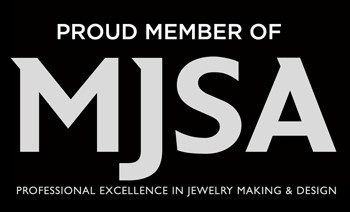Karat gold, gold filled or gold plated?
The term gold filled refers to the manufacturing process in which an ingot of base metal, usually copper, is bonded with thinner ingots of gold. A "sandwhich" is formed by mechanically bonding a layer of gold on both sides of the copper ingot. This "sandwhich" is then cold worked by rolling or drawing until a much thinner gauge metal is achieved. Products are then formed or die-struck from this layered material. The object is then gold plated to hide the edges, as they would otherwise reveal the sandwhiched construction. Although gold-filled products are readily available today, this process was most popular in the early 1900's. Hallmarking will appear as 1/20th 14k gold filled, indicating that by weight, 1/20th of the metal content of the product is 14k gold.
Rolled gold plate refers to the same process; however the gold content is lower, for example, 1/30th 12k. In your question, the reference to white and yellow is simply an indication of the color of the gold used. The advantages of this product are that the gold layering is much thicker, and longer wearing, than gold plating. It is also much less expensive than a similar product made of all 14k material.
When a product is referred to as gold, rhodium, or nickel-plated, this indicates that it has been electroplated with a thin layer of that particular metal. The terms gold electroplated, or gold plated, indicates an electrolytically applied coating of gold over a base metal. The plated coating must not be less than 10k in fineness, to a minimum overall equivalent of seven millionths of an inch of fine gold. A coating that is any thinner must be marked gold flashed or gold washed. If the coating is equivalent to 100 millionths of an inch of fine gold it may be marked Heavy Gold Electroplate or HEP. Since only a micro thin layer of the metal is deposited on the base object, electroplating is inexpensive, and in most cases tends to wear off easily.











